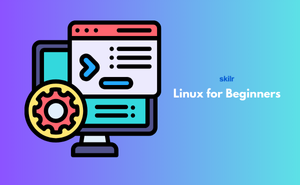👇 CELEBRATE CLOUD SECURITY DAY 👇
00
HOURS
00
MINUTES
00
SECONDS

The Linux for Beginners certification is meant to help newcomers understand and work with one of the most important operating systems used in technology today. From smartphones to supercomputers, Linux plays a key role in powering devices and online services. This program covers the basics like using the command line, handling files, and understanding system structure.
It serves as a gateway for individuals who want to explore IT careers. The certification builds essential knowledge, making learners ready for advanced Linux topics and career opportunities in areas such as cloud computing, DevOps, and cybersecurity.
This exam is ideal for:
Domain 1 - Introduction to Linux
Domain 2 - Getting Started with Linux
Domain 3 - Linux Command Line Basics
Domain 4 - File System Management
Domain 5 - User and Group Management
Domain 6 - Process and System Management
Domain 7 - Package Management
Domain 8 - Networking Basics in Linux
Industry-endorsed certificates to strengthen your career profile.
Start learning immediately with digital materials, no delays.
Practice until you’re fully confident, at no additional charge.
Study anytime, anywhere, on laptop, tablet, or smartphone.
Courses and practice exams developed by qualified professionals.
Support available round the clock whenever you need help.
Easy-to-follow content with practice exams and assessments.
Join a global community of professionals advancing their skills.
Yes, most development environments and servers run on Linux.
No, Linux can also run on desktops, laptops, and embedded systems.
Yes, beginner-friendly distributions like Ubuntu make it very accessible.
Banking, telecom, IT services, cloud providers, and government sectors.
Yes, it builds a solid foundation for advanced Linux, cloud, and DevOps certifications.
Linux is open-source, more customizable, and widely used in servers.
Absolutely, Linux professionals are in high demand globally.
No, programming is not required, but it helps in future learning.
Yes, Linux distributions like Ubuntu and Mint are beginner-friendly for home use.
Anyone new to Linux, including students, IT aspirants, and hobbyists.
No, this certification is designed for complete beginners.
Because Linux powers servers, cloud platforms, and even Android devices.
No, with practice, Linux is easy to pick up and very logical.
System administration, cybersecurity, DevOps, cloud computing, and software development.
Basic commands, file management, system usage, networking, and more.